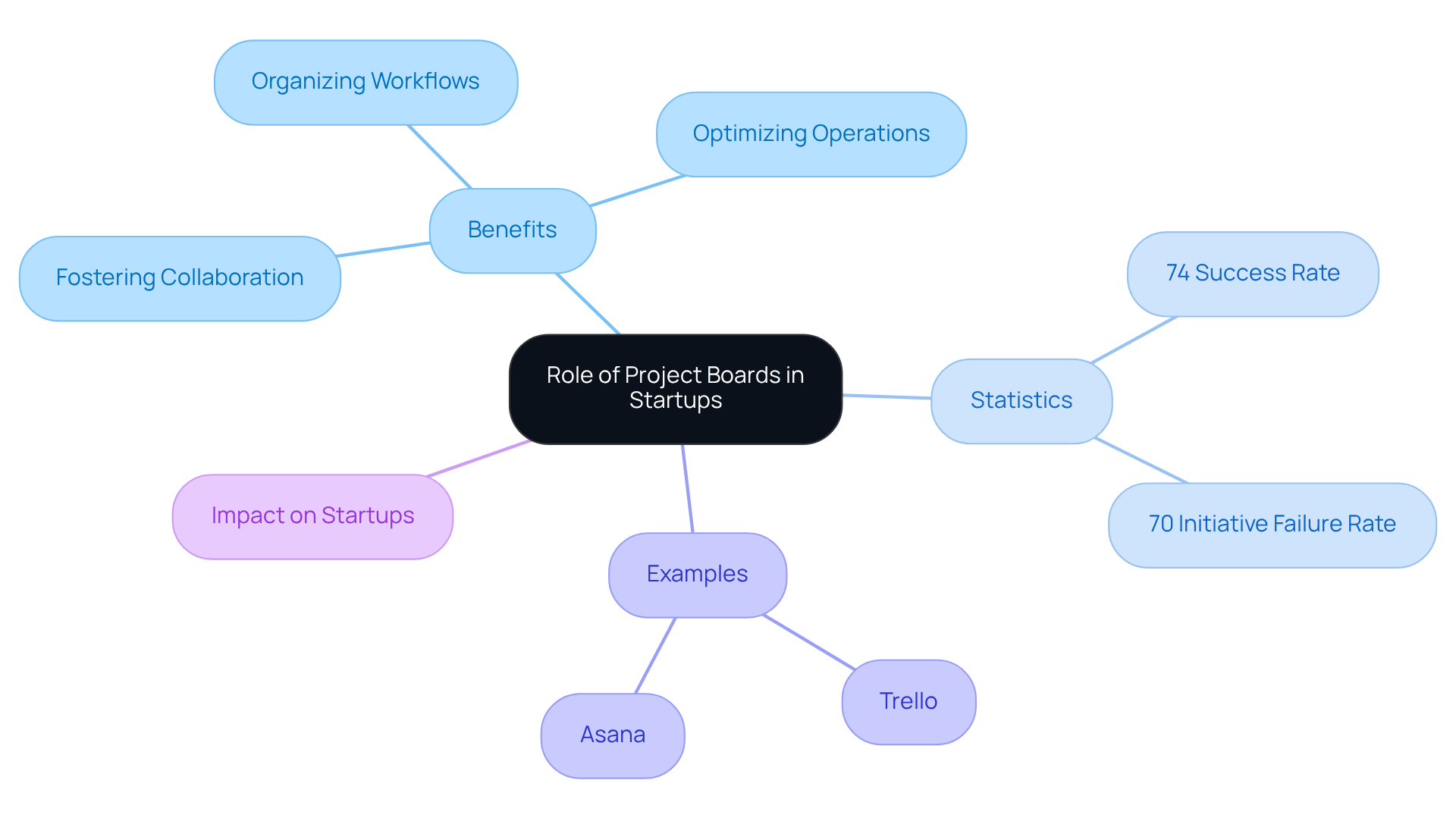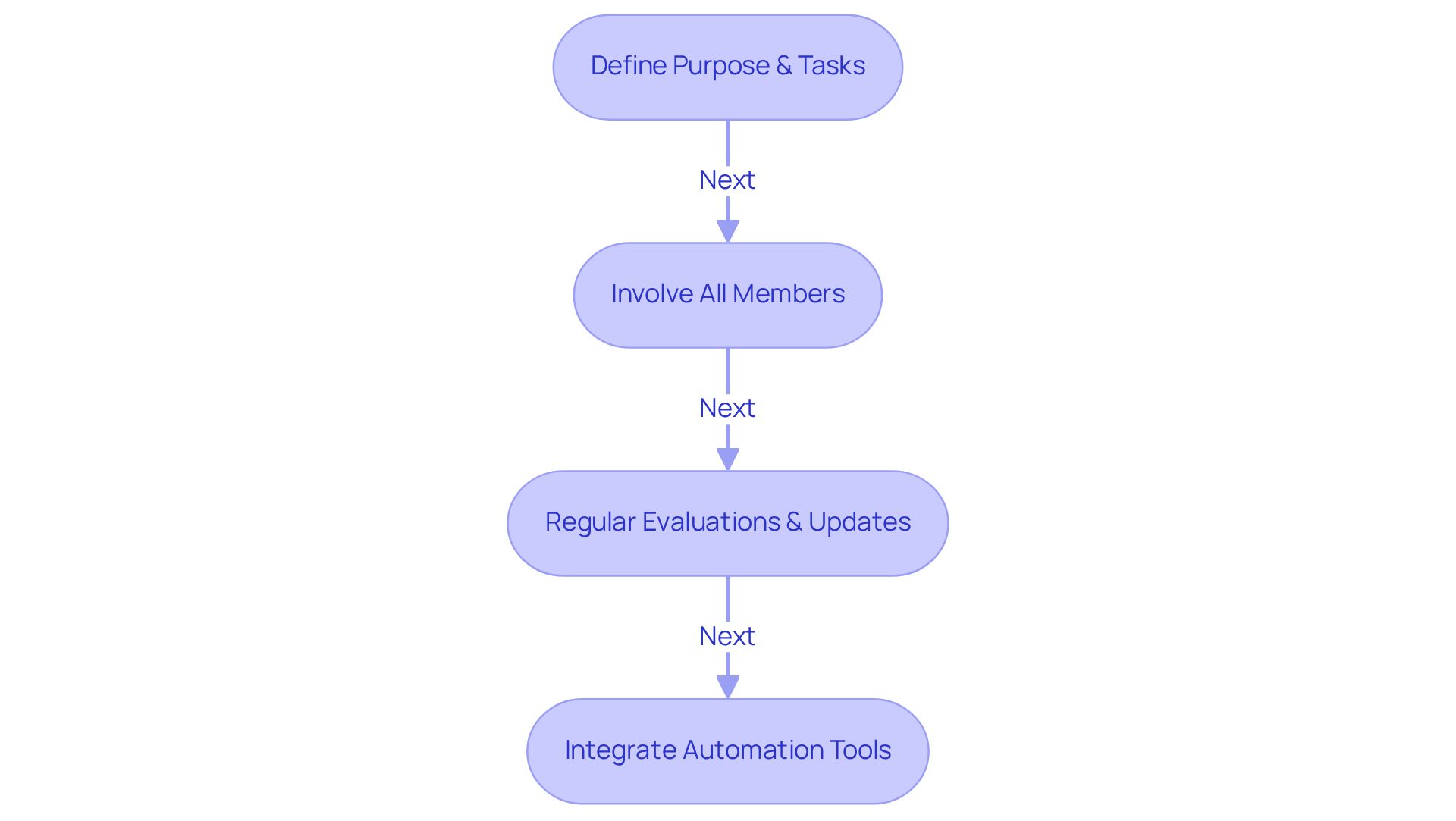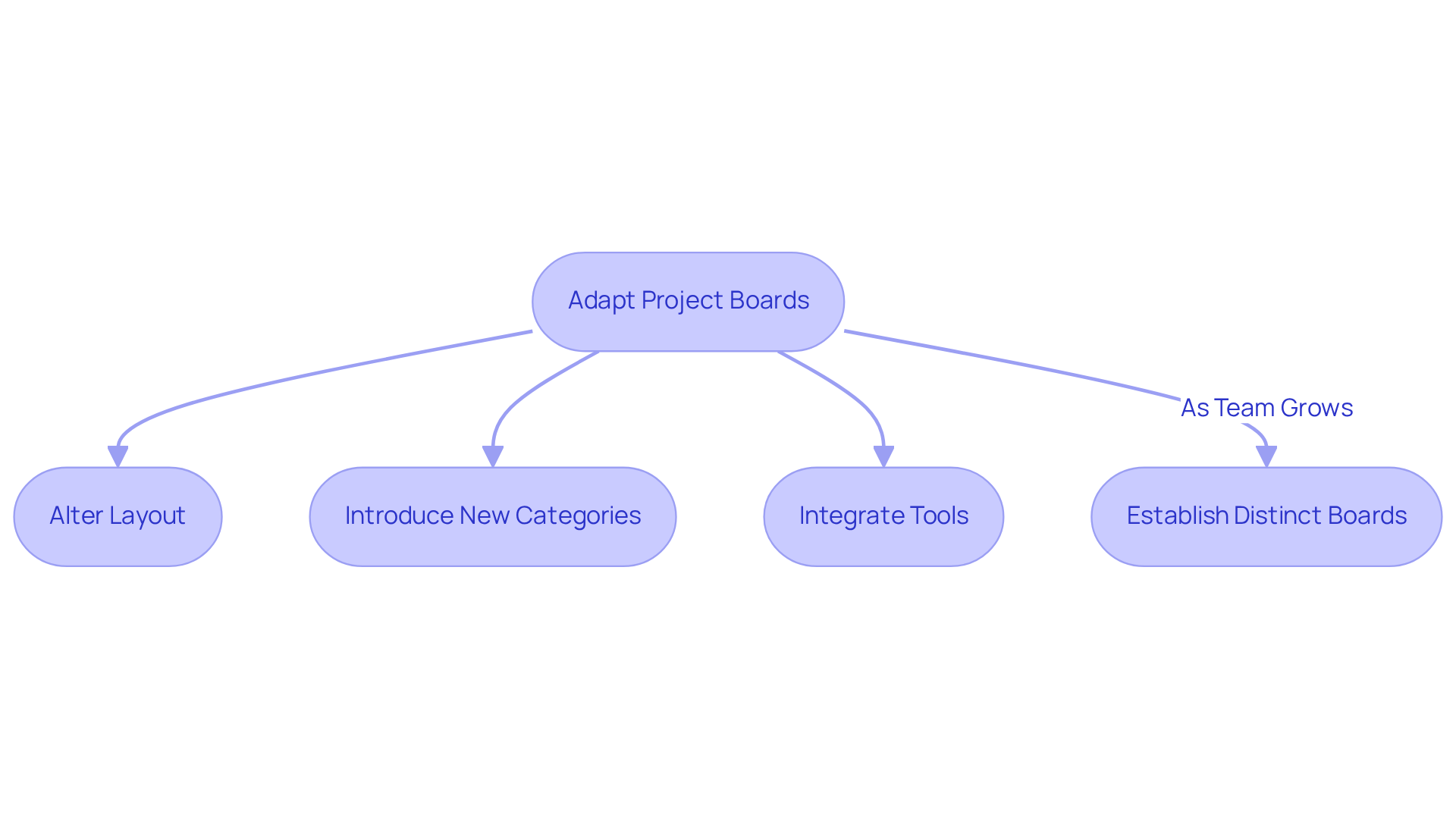Overview
The article explores four essential types of project boards—Kanban, Scrum, Gantt charts, and automation tools—that can significantly enhance startup efficiency. By improving task management and fostering team collaboration, these boards play a crucial role in the success of any startup. How can these tools transform your workflow? Each project board effectively visualizes workflows, facilitates communication, and adapts to changing project needs. This adaptability ultimately leads to improved productivity and superior project outcomes. Embracing these methodologies could be the key to unlocking your startup's potential.
Introduction
In the fast-paced world of startups, where innovation and agility are paramount, the right project management tools can make all the difference. Project boards serve as vital instruments that not only streamline workflows but also enhance team collaboration and clarity, ultimately driving efficiency. However, with various types of boards available—each with its unique strengths—how can startups determine which is best suited for their specific needs? Exploring the essential project boards can reveal strategies that empower new ventures to thrive in an ever-evolving landscape.
Understand the Role of Project Boards in Startups
Boards for projects serve as essential tools for new ventures, providing visual frameworks for managing tasks, responsibilities, and schedules. They empower teams to organize workflows, prioritize effectively, and align with overarching goals. By leveraging boards for projects, startups can optimize operations, minimize miscommunication, and foster collaboration among colleagues—an indispensable factor in dynamic environments where clarity and rapid decision-making are paramount. For example, Kanban systems enable teams to visually monitor task progress, swiftly pinpoint bottlenecks, and recalibrate priorities as necessary. This adaptability is crucial for new businesses striving to innovate and respond promptly to market fluctuations.
Statistics underscore the significance of governance teams in enhancing new venture efficiency: organizations that implement structured management practices report a 74% success rate when objectives are clearly articulated and stakeholder engagement is prioritized. Furthermore, successful startups like Trello and Asana illustrate that effective management systems, including boards for projects, can significantly bolster collaboration among teams and elevate productivity, leading to superior outcomes. In a landscape where 70% of initiatives fail to yield anticipated results, the strategic deployment of management tools can be transformative, ensuring that teams remain focused and aligned in their endeavors.

Explore Different Types of Project Boards
Startups can leverage various project displays, each tailored to specific project management needs. The Kanban system stands out for its simplicity and effectiveness in visualizing workflows. It enables teams to manage tasks in a continuous flow, allowing for quick recognition of subsequent actions. Notably, 87% of users reported that the Kanban Method was more effective than previous management approaches, according to the State of Kanban Report 2022, underscoring its value in boosting productivity.
On the other hand, Scrum boards are particularly suited for teams working in sprints, offering a structured framework with clearly defined roles and timelines. This method has gained traction, with 63% of Agile practitioners preferring Scrum for its ability to foster collaboration and improve outcomes. Furthermore, 86% of marketers intend to transition some or all of their teams to Agile methodologies, indicating a wider acceptance of Agile practices.
Gantt charts serve as a powerful tool for projects requiring detailed scheduling and tracking of dependencies, providing a visual timeline that enhances planning accuracy. Significantly, 34% of companies utilize time-tracking tools for tasks, highlighting the importance of meticulous scheduling in management.
By understanding the distinct advantages of these boards, startups can make informed decisions that align with their operational methods and task requirements, ultimately enhancing efficiency and effectiveness in their management practices. However, it is essential to acknowledge common pitfalls, such as the 40% of employees who identify remote working as a management challenge, which can hinder the effectiveness of these tools. Employing a management tool like Casy, which integrates with chat platforms to streamline workflows, can further assist startups in overcoming these challenges.
Implement Best Practices for Project Board Setup
To establish effective boards for projects, startups must adhere to several best practices.
- Firstly, it is essential to clearly define the group's purpose and the types of tasks it will oversee. This clarity aids in organizing tasks into relevant categories on boards for projects, such as 'To Do', 'In Progress', and 'Completed'.
- Secondly, involving all members in the setup process ensures that the committee aligns with everyone's needs and preferences, fostering a sense of ownership. Did you know that 91% of management professionals report difficulties in managing tasks? This statistic underscores the importance of group participation in addressing these challenges.
- Thirdly, regular evaluations and updates of the committee are crucial to accurately reflect the current status of tasks, initiatives, and the boards for projects. This practice not only maintains the relevance of the boards for projects but also encourages active engagement from team members.
- Finally, integrating automation tools can significantly streamline task creation and updates on boards for projects, thus reducing manual input and enhancing overall efficiency. For example, tools like Casy can capture key information from conversations, automatically creating tasks and setting deadlines. Studies indicate that management software can improve efficiency by 50% and reduce expenses by 20%, making automation particularly beneficial in dynamic new business environments.
Furthermore, with 62% of organizations anticipating an increase in work initiatives, implementing these best practices becomes even more vital for new businesses striving for success.

Adapt and Evolve Your Project Boards Over Time
As startups expand and their initiatives develop, it is crucial to adapt management tools accordingly. Are you consistently seeking feedback from your team regarding the committee's effectiveness? Modifications based on their suggestions can lead to significant improvements. This may involve:
- Altering the layout
- Introducing new categories
- Integrating tools that enhance functionality
Furthermore, as your team grows, consider establishing distinct boards for projects or specific tasks to avoid chaos and miscommunication. Embracing a culture of continuous improvement will ensure that boards for projects remain invaluable assets in managing workflows and boosting productivity.

Conclusion
Utilizing project boards is essential for startups aiming to enhance efficiency and foster collaboration among their teams. These boards not only provide visual frameworks that streamline workflows but also empower teams to prioritize tasks and align with their strategic goals. By adopting the right project management tools, startups can significantly reduce miscommunication and adapt quickly to the dynamic nature of their environments.
The article highlights various types of project boards, including Kanban, Scrum, and Gantt charts, each offering distinct advantages tailored to specific project needs. Key insights reveal that implementing best practices—such as clearly defining purposes, involving team members in the setup, and regularly updating the boards—can greatly improve management effectiveness. Additionally, the integration of automation tools can enhance efficiency, making it easier for teams to manage their tasks and meet growing demands.
In conclusion, the significance of project boards in driving startup success cannot be overstated. Embracing a culture of continuous improvement and adaptability ensures that these tools remain relevant and effective as the organization evolves. Startups are encouraged to actively seek feedback, refine their project management strategies, and leverage the benefits of these essential boards to navigate the complexities of their growth journey.
Frequently Asked Questions
What is the role of project boards in startups?
Project boards serve as essential tools for startups, providing visual frameworks for managing tasks, responsibilities, and schedules. They help teams organize workflows, prioritize effectively, and align with overarching goals.
How do project boards benefit team collaboration?
By leveraging project boards, startups can optimize operations, minimize miscommunication, and foster collaboration among colleagues, which is crucial in dynamic environments that require clarity and rapid decision-making.
Can you give an example of a project management system?
Kanban systems are an example of a project management system that allows teams to visually monitor task progress, identify bottlenecks, and adjust priorities as needed.
What statistics highlight the importance of governance teams in startups?
Organizations that implement structured management practices report a 74% success rate when objectives are clearly articulated and stakeholder engagement is prioritized.
What are some examples of successful startups using project boards?
Successful startups like Trello and Asana demonstrate that effective management systems, including project boards, can significantly enhance team collaboration and productivity.
What is the impact of management tools on startup success rates?
In a landscape where 70% of initiatives fail to achieve expected results, the strategic use of management tools like project boards can be transformative, helping teams stay focused and aligned in their efforts.




